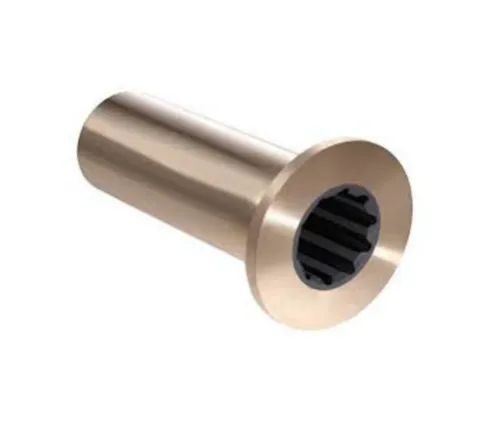Essential Bearings and Hubs for Marine Vessels and Trailers
Marine vessels and trailers are complex machines that rely heavily on bearings and hubs to function efficiently and safely. From steering components on ships to wheels on trailers, these critical parts reduce friction, support loads, and enable smooth movement. Whether you're towing your boat to the water or navigating open seas, the reliability of components such as marine trailer hubs, rudder bearings, marine trailer bearings, marine shaft bearings, boat trailer axle bearings, and the marine cutless bearing is non-negotiable.

Let’s explore the role of each part, the importance of proper maintenance, and how these small components contribute to big performance in the marine world.
Bearings for Trailers: Smooth Sailing Starts on Land
Getting your boat safely to the water starts with a properly functioning trailer. At the core of trailer functionality are marine trailer hubs marine trailer bearings, and boat trailer axle bearings.
Marine Trailer Hubs
Marine trailer hubs are the central mounting units where the wheels attach to the axle. These hubs house the wheel bearings and are responsible for keeping the trailer rolling smoothly. In saltwater environments, corrosion is a serious threat, which is why most marine hubs are made of galvanized or stainless steel. These hubs often come pre-assembled with grease, seals, and bearings to simplify installation.
Marine Trailer Bearings
Marine trailer bearings sit inside the hubs and allow the wheels to rotate with minimal resistance. Because these trailers are often submerged, water intrusion is a common issue. To combat this, many use bearing buddies or sealed bearing kits filled with marine-grade grease. Regular inspection and repacking are critical—worn bearings can seize, causing dangerous breakdowns.
Boat Trailer Axle Bearings
Supporting the trailer’s load are the boat trailer axle bearings. These are tapered roller bearings designed to carry radial and axial loads from the weight of the boat. Keeping these bearings greased and sealed ensures your trailer remains roadworthy and safe. Symptoms of worn axle bearings include wheel wobble, overheating, and grinding noises.
By maintaining all three components—marine trailer hubs, marine trailer bearings, and boat trailer axle bearings—you ensure dependable trailering and avoid costly roadside failures.
In-Water Performance: Steering and Propulsion Bearings
Once the boat is in the water, a different set of bearings takes over to control navigation and propulsion. These include rudder bearings, marine shaft bearings, and marine cutless bearings—all essential for smooth, stable, and efficient performance.
Rudder Bearings
The rudder is a boat’s steering control, and rudder bearings are critical to its smooth operation. These bearings allow the rudder to pivot under load without friction or play. They are usually made of bronze, stainless steel, or polymer composites for corrosion resistance and durability.
Key functions of rudder bearings include:
Reducing friction during turns
Providing support and alignment
Minimizing noise and vibration
Worn rudder bearings can lead to sloppy steering or excessive vibration, making handling less precise and potentially dangerous, especially in rough waters.
Marine Shaft Bearings
Marine shaft bearings support the propeller shaft that transmits engine power to the propeller. These bearings are typically located at various points along the shaft line to keep it properly aligned and stable. Shaft bearings are designed to operate in submerged, lubricated conditions, often with water acting as the lubricant.
If not properly aligned or maintained, worn marine shaft bearings can cause vibration, noise, and damage to the drivetrain.
Marine Cutless Bearing
Among the most well-known types of shaft support, the marine cutless bearing (sometimes spelled "cutlass") is a water-lubricated bearing found at the stern tube. It typically features a rubber or composite sleeve with longitudinal grooves that allow water to flow and provide cooling.
Benefits of the marine cutless bearing:
Excellent water flow for cooling
Quiet and low-friction operation
Long life when properly aligned and flushed
This bearing must be replaced periodically, especially if the rubber lining becomes worn or damaged. Failure to maintain it can lead to shaft misalignment and propeller shaft wear.
Maintenance Matters: Extending Bearing Life on Land and Sea
All marine bearings—whether on your trailer or your boat—require consistent maintenance. Here's a simplified checklist for bearing care:
Inspect for corrosion, wear, or pitting
Clean out old grease and contaminants
Repack with marine-grade, waterproof grease
Seal to prevent water intrusion
Align drive shafts and steering components
Replace worn parts before failure occurs
In addition, always flush your trailer hubs and bearings with fresh water after saltwater use, and dry them thoroughly. For onboard components, monitor vibration levels and steering responsiveness—both can signal bearing issues.
From the moment you tow your boat to the ramp to the time you steer back to shore, bearings play a critical role. High-quality, well-maintained components like marine trailer hubs, marine trailer bearings, boat trailer axle bearings, rudder bearings, marine shaft bearings, and the marine cutless bearing ensure reliability, safety, and performance.
Taking the time to inspect, maintain, and replace these parts as needed isn’t just about convenience—it’s about protecting your investment and ensuring every trip is smooth, whether on land or sea.
-
Seal 12x20x5: Precision Radial Shaft Seals for Industrial Reliability
Notícias Nov.24,2025
-
Seal 12x18x5: Essential Guide to Specifications, Applications & Vendors
Notícias Nov.24,2025
-
Understanding Seal 12 20 5: Applications, Specifications & Industry Insights
Notícias Nov.23,2025
-
Durable Oil Seal 85x110x12 – Reliable Sealing Solutions for Industry
Notícias Nov.23,2025
-
Durable and Precise Oil Seal 75x95x10 for Efficient Machinery | YJM Seal
Notícias Nov.22,2025
-
Durable Oil Seal 75x100x10 for Reliable Industrial Performance | YJM Seal
Notícias Nov.22,2025
-
High-Quality Oil Seal 65x90x10 | Durable & Reliable Sealing Solutions
Notícias Nov.22,2025
Categorias de produtos















